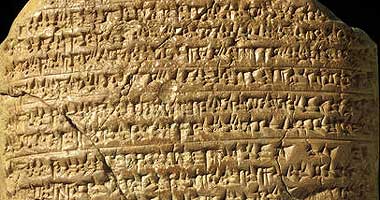

By the late 7th century, Babylonia and Egypt were caught up in a power struggle. In 601 B.C.E. Nebuchadnezzar's armies attacked Egypt, an event that led to the revolt of Jehoiakim, king of Judea, against Babylon.
The Judean king and his ministers were pro-Egyptian, and against the warnings of the prophet Jeremiah, they aligned themselves with Pharaoh Necho of Egypt. In 597 B.C.E., however, Babylonian armies marched into Judea and besieged Jerusalem. Jehoiakim died and his son Jehoiachin became king. Nebuchadnezzar's Chronicles record this siege.
Soon thereafter, Babylonian forces entered Jerusalem and the young Jehoiachin was exiled to Babylon with 10,000 subjects. A Babylonian ration list suggests King Jehoiachin and his family were treated well while in captivity. The Babylonians anointed Jehoiachin's uncle Zedekiah, as king. Subsequently, King Zedakiah began to withhold the requisite payments of tribute to the Babylonians, and Nebuchadnezzar sent his forces once more into Jerusalem in 587 B.C.E. This time Jerusalem was captured, the Temple was destroyed and large portions of the population were deported to Babylon.
Next >>
 
|
|